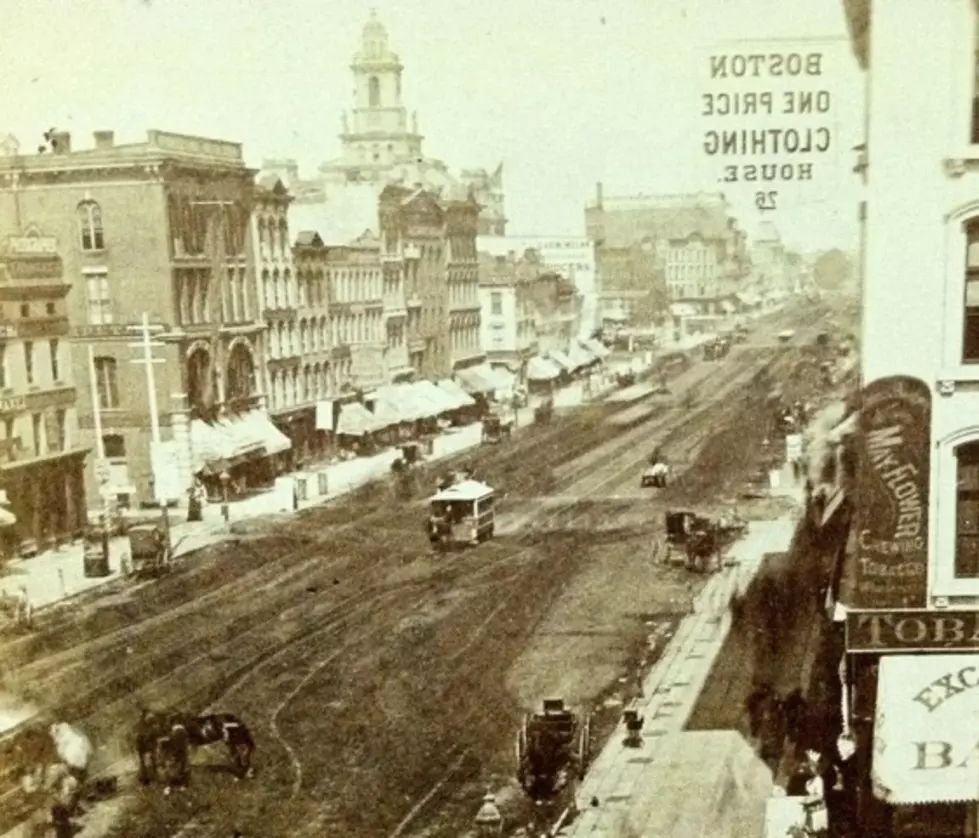
New Year’s Eve, 1869: A Great Day for Battle Creek
New Year’s Eve was a very big deal in Battle Creek in 1869. The city had been incorporated 10 years earlier and continued to grow and grow. And on this New Year’s, the city’s 5,800 residents were buzzing as Hamblin’s Opera House opened. On December 31, 1869, an audience of 1700 attended a program of singers and instrumentalists.
The building cost $40,000. A historical account published a few years later stated, “One of the chief attractions of Battle Creek is its commodious opera-house. Up to 1868, the city possessed no regular place of amusement of sufficient size to induce large first-class theatrical troops to visit the city. In that year, however, Mr. A. C. Hamblin, with his characteristic enterprise, erected a handsome and substantial building, which he fitted up in elegant style, and introduced in it all of the modern improvements and stage effects. The ceiling is beautifully frescoed, and the general arrangement of the seats is made with a design for the comfort of the audience. The auditorium is seventy-two by one hundred feet, and, with the gallery which surrounds it, has a seating capacity for twelve hundred. The house was erected at a cost of forty thousand dollars, ($750,000 in today’s dollars), and is used for any legitimate amusements.”
The hall was located on the 2nd floor, and stores existed on the street level. It had seating for 900 on portable chairs, and the floor could be cleared and used as a ballroom.
From its opening in 1869 until 1902, the theater was used for local productions as well as traveling shows, including drama, dance, concert music, comedies, minstrel shows, trick dog and horse shows, mind readers, and magicians. Here are some events that were held there:
- January 20, 1870, The Battle Creek Suffrage Association opens its convention which eventually led to (failed) state constitutional amendment vote.
- January 25, 1870 “A Grand Masquerade Ball”, sponsored by the German Benevolent Association.
- January 18, 1875, Harry Garr, the “Man Fish,” appeared as one of a series of novelty acts, including a contortionist, trapeze artist, an Irish impersonator, and E G Salisbury, who played 8 musical instruments at one time. Garr was a champion swimmer who did underwater acts, including eating, drinking, and smoking underwater. Admission was 25 cents
- May 2, 1878, The first appearance of the Germania Band, which eventually became the Battle Creek Symphony.
- October 16, 1878 -- Frank J Kellogg demonstrated the Edison phonograph, shortly after it was invented.
- April 15, 1891 -- John Philip Sousa’s Marine Band appears. “A receiver for a phonograph was placed in the balcony and music was recorded on cylinders for those who could not attend.”
After the Post Theater opened in 1902, the Opera House declined and soon found its second life. It was purchased by Walter S. Butterfield, who first leased the building in 1905, and converted it to a vaudeville theater and later to a movie theater. After extensive renovations, Butterfield opened the Bijou Theater on September 4, 1905. It was operated by Butterfield until 1909 when he completed and opened his new theater on Main Street. Butterfield’s theatrical chain which eventually included 122 movie theaters.
In 1912, the Opera House found its third life. John Toeller bought and refurbished the building in 1912 and it was used as a department store. The current green façade was added in 1948. In 1971, the Toeller family sold the building to the L.W. Robinson Company, and it became the “Robinson’s Annex.” Robinson's went bankrupt in 1988.
The building stood mostly vacant in the ’90s. The United Arts Council used it for a dinosaur exhibit. The International Festival of Lights used it for a warming house.
In 2001, the community had high hopes for the building. Chef Donald Burns, owner of “34 West” decided to move his restaurant from across the street into the former Opera House, and open “High Noon.” Burns had been successful at 34 West Michigan Avenue but was looking for a larger space. He spent a considerable sum renovating 17 West Michigan, but construction delays and red tape with state licensing delayed the opening for so long that the new restaurant was doomed to financial failure. Burns chose to close “34 West” during the construction and had no income during the lengthy transition.
The building has been vacant for nearly 20 years now, but there is news of a new project to revive it once again. Battle Creek Unlimited and Hollander Development Corp. are reportedly partnering on a project to redevelop it for affordable housing. The plan is for the building to have its upper floors adapted into 30 one-bedroom and two-bedroom apartments. The project would create mixed-income housing options downtown, targeting residents with annual incomes between $15,000 and $38,000. The proposed monthly rent for a one-bedroom apartment would begin at $284.

SEE MORE: 12 Items Every Michigander Has In Their Closet
More From 1240 WJIM AM









